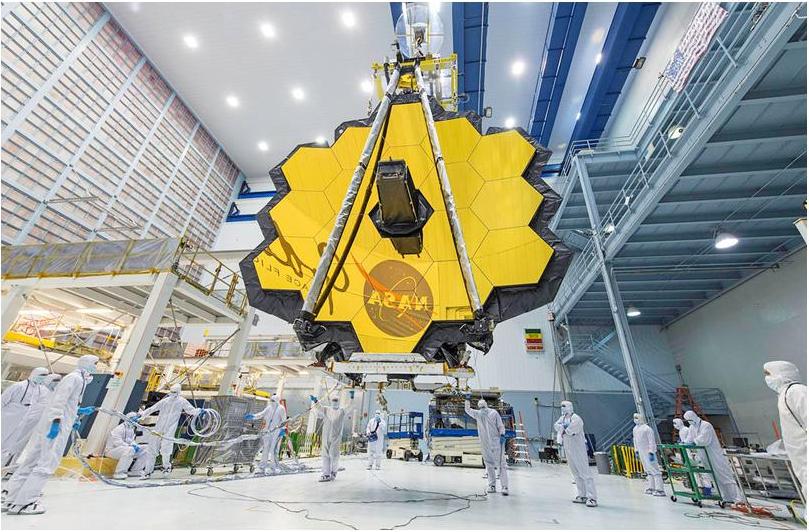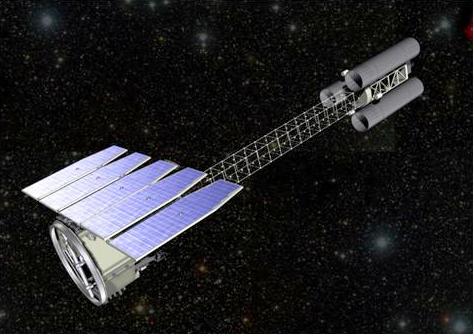Science
Space exploration projects
deploying in 2021
While there are thousands of Earth orbit satellite launches every year (mainly for communications on a scale that few had envisaged when man first walked on the Moon) it is the big projects that capture the imagination. The past two decades have been dominated by the International Space Station, the Hubble Space Telescope and the deployment of exploratory craft on the surface of Mars.
Over the next few months and years, there will be equally significant new projects which are overviewed here.
The James Webb Space Telescope (JWST)
This project was named in honour of James Webb who, though not an astronomer, was appointed as administrator of NASA in 1961 and served until 1968. During this time, he oversaw the development of the Apollo programme which culminated in the first manned Moon landing in 1969.
The JWST has suffered several lengthy launch delays but is now scheduled for 31st October 2021. Its cameras will detect electromagnetic radiation in the far visible (orange) and mid-infrared frequency range. By comparison Hubble Space Telescope “sees” in mostly higher frequencies from the near ultra violet, through visible light, to the near infrared. Its images have not only added to our knowledge of the universe but also profoundly affected our personal appreciation of its immensity and grandeur. However, even Hubble has its limits; the most distant and therefore the oldest regions of the universe are invisible to it. The JWST is designed to extend our observations and knowledge into those regions. Its ability to do this depends on the phenomenon of red-shift whereby the wavelengths of light emitted by an object increase – are Doppler shifted – as it moves away from the observer. The JWST’s cameras are designed to detect these red-shifted wavelengths. This will provide information in regard to the big cosmological questions. For example, the formation of the first galaxies, the age of the universe, its rate of expansion and even, perhaps, how it all began.
The major design problem of the JWST was to protect its detectors from all the infrared noise that pervades Earth and its nearby region of space.
The JWST will be launched on a European Space Agency Ariane 5 rocket from French Guiana and put into Earth orbit at an altitude varying from 374,000 km to 1,500,000 km (by contrast, the Hubble orbits at an altitude of 550 km). This will avoid infrared noise from Earth’s atmosphere; in addition, the craft’s orbit will permanently keep the Earth between it and the Sun. The Earth’s shadow will protect it from the Sun’s vast infrared emission. The JWST is also protected by highly reflective sunshades made from similar material as used in spacesuits.
Hopefully, the Webb telescope will now launch on time and we can look forward to spectacular and mysterious images of the deepest regions of space.

The James Webb Space Telescope mirror. © NASA
Imaging X-Ray Polarimetry Explorer (IXPE)
So, you want to know how the universe works? Then project IXPE is the one to follow.
A joint Italian-USA, X-ray astronomy project, this instrument will detect the x-ray emissions of various deep-space targets, including pulsars, quasars, the remnants of exploded (supernova) stars, binary star systems which contain a black hole or neutron star and even the centre of our own galaxy, the Milky Way.
August 2021 is the month set to launch a Falcon 9 rocket to deploy the IXPE telescope. The telescope will go into Earth orbit at an altitude of 540 km. This is a tiny distance compared to the JWST, but it is enough to get the craft above the x-ray opaque atmosphere of Earth.
The x-ray waves from distant, high-energy sources are emitted in a particular orientation (i.e. polarised). The IXPE detector has three identical cameras set-up to detect polarised x-rays. Although IXPE is only active for two years, study of these x-rays will provide data about the extremely high energy processes that take place in the universe and through analysis of this, we may gain understanding of the quantum physics that is occurring throughout the Universe.

Impression of Imaging X-Ray Polarimetry Explorer. © M.Weiskopf/NASA
Mars
The single word, Mars, fires the imagination and evokes aspirations of space travel and discovery. So near and yet so far, Mars seems close enough to be a reasonable ambition for humans to visit while at the same time emphasising the difficulties of travelling anywhere in space.
We have witnessed several Mars exploration projects in recent years, and over the next three years there will be three significant new projects for exploring the Martian environment.
Al-Amal
On 19th July, the United Arab Emirates launched a Mars mission (al-Amal, meaning hope) on a Japanese rocket. The mission will put a satellite into Mars orbit, around the 13th February 2021, to investigate the Martian atmosphere and the current and past climate. It will also try to provide information about how Mars lost its atmospheric oxygen and hydrogen. This information will be of importance for future missions to send manned craft to Mars and for possible future colonisation.
Tianwen-1
23rd July saw China launch a Mars combined orbiter and lander on one of its own, Long March 5, rockets. Tianwen-1 (translates as 'Questions to Heaven') will arrive at Mars in February 2021. It will be the first Mars mission to deploy an orbiter and a lander. It will do all this in one launch; technologically this is a very important step in Mars exploration.
The lander will be equipped with several instruments that will collect data on Martian geology, water, magnetism, gravity and climate. It will send this information to the orbiter for onward transmission to Earth.
Perseverance
The next NASA mission to Mars, perhaps aptly named Perseverance, launched on 31st July on an Atlas V-541 rocket from Cape Canaveral.
Arriving in March 2021, Perseverance uses a two-stage landing craft which can navigate to a safe landing site and deliver the surface lander in a controlled manner (see image below).
Alien life, in extraordinary and myriad forms, has long been at the core of science fiction; it is only in recent times that the field of astrobiology has become mainstream in science. Our expectations for Mars in this respect may be limited to evidence of long extinct microbial life-forms. However, who knows what will be discovered? Astrobiology is not just about alien life, it is also concerned with the possibility of sustaining human life on planets other than Earth.
Perseverance’s mission is primarily about astrobiology. It will seek evidence of microbial life and past environments that could have supported such life. It will also test the possibility of extracting oxygen from the Martian atmosphere (which is 95% carbon dioxide) as a means of supporting human life in the future. The lander will be active for at least one Martian year (687 Earth days) and will collect a large quantity of rock samples which it will cache on the surface for transport to Earth by future craft which can make the round trip in several year's time.

Impression of Perseverance lander deploying. © NASA
Ian Moss
Ian Moss is retired from a career in biotechnology. He is an amateur astronomer with a particular interest in imaging planets and deep-space objects, mostly from his home in a light-polluted London suburb! Ian is a member of Havering Astronomical Society which has a membership spanning from beginners to professionals. The Society is active in out-reach to the local community.
[Up: Article Index | Home Page: Science Fact & Fiction Concatenation | Recent Site Additions]
[Most recent Seasonal Science Fiction News]
[Convention Reviews Index | Top Science Fiction Films | Science Fiction Books]
[Science Fiction Non-Fiction & Popular Science Books]